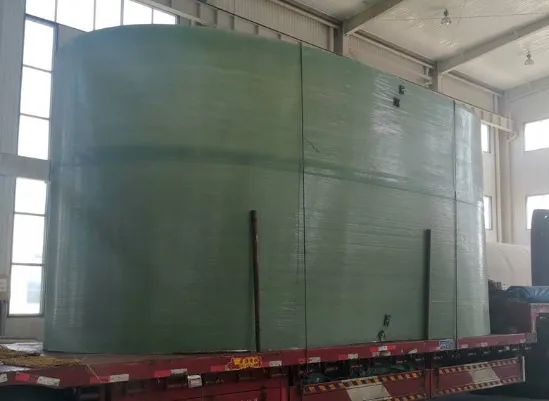
-
 Afrikaans
Afrikaans -
 Albanian
Albanian -
 Amharic
Amharic -
 Arabic
Arabic -
 Armenian
Armenian -
 Azerbaijani
Azerbaijani -
 Basque
Basque -
 Belarusian
Belarusian -
 Bengali
Bengali -
 Bosnian
Bosnian -
 Bulgarian
Bulgarian -
 Catalan
Catalan -
 Cebuano
Cebuano -
 China
China -
 China (Taiwan)
China (Taiwan) -
 Corsican
Corsican -
 Croatian
Croatian -
 Czech
Czech -
 Danish
Danish -
 Dutch
Dutch -
 English
English -
 Esperanto
Esperanto -
 Estonian
Estonian -
 Finnish
Finnish -
 French
French -
 Frisian
Frisian -
 Galician
Galician -
 Georgian
Georgian -
 German
German -
 Greek
Greek -
 Gujarati
Gujarati -
 Haitian Creole
Haitian Creole -
 hausa
hausa -
 hawaiian
hawaiian -
 Hebrew
Hebrew -
 Hindi
Hindi -
 Miao
Miao -
 Hungarian
Hungarian -
 Icelandic
Icelandic -
 igbo
igbo -
 Indonesian
Indonesian -
 irish
irish -
 Italian
Italian -
 Japanese
Japanese -
 Javanese
Javanese -
 Kannada
Kannada -
 kazakh
kazakh -
 Khmer
Khmer -
 Rwandese
Rwandese -
 Korean
Korean -
 Kurdish
Kurdish -
 Kyrgyz
Kyrgyz -
 Lao
Lao -
 Latin
Latin -
 Latvian
Latvian -
 Lithuanian
Lithuanian -
 Luxembourgish
Luxembourgish -
 Macedonian
Macedonian -
 Malgashi
Malgashi -
 Malay
Malay -
 Malayalam
Malayalam -
 Maltese
Maltese -
 Maori
Maori -
 Marathi
Marathi -
 Mongolian
Mongolian -
 Myanmar
Myanmar -
 Nepali
Nepali -
 Norwegian
Norwegian -
 Norwegian
Norwegian -
 Occitan
Occitan -
 Pashto
Pashto -
 Persian
Persian -
 Polish
Polish -
 Portuguese
Portuguese -
 Punjabi
Punjabi -
 Romanian
Romanian -
 Russian
Russian -
 Samoan
Samoan -
 Scottish Gaelic
Scottish Gaelic -
 Serbian
Serbian -
 Sesotho
Sesotho -
 Shona
Shona -
 Sindhi
Sindhi -
 Sinhala
Sinhala -
 Slovak
Slovak -
 Slovenian
Slovenian -
 Somali
Somali -
 Spanish
Spanish -
 Sundanese
Sundanese -
 Swahili
Swahili -
 Swedish
Swedish -
 Tagalog
Tagalog -
 Tajik
Tajik -
 Tamil
Tamil -
 Tatar
Tatar -
 Telugu
Telugu -
 Thai
Thai -
 Turkish
Turkish -
 Turkmen
Turkmen -
 Ukrainian
Ukrainian -
 Urdu
Urdu -
 Uighur
Uighur -
 Uzbek
Uzbek -
 Vietnamese
Vietnamese -
 Welsh
Welsh -
 Bantu
Bantu -
 Yiddish
Yiddish -
 Yoruba
Yoruba -
 Zulu
Zulu
Feb . 18, 2025 01:02
Back to list
Tanks and Vessels
With the rapid advancements in mining technologies, equipment for mining with fiberglass components has become a focal point for enhancing performance, safety, and sustainability. As industries push the boundaries of what is possible, fiberglass emerges as a material of choice due to its exceptional characteristics. This persuades manufacturers and mining experts to adopt fiberglass in various mining tools and machinery, signaling a transformative impact on the mining landscape.
In real-world applications, mining operations using fiberglass-enhanced equipment have reported significant improvements in efficiency. A notable example comes from a high-altitude copper mine in South America, where the utilization of lightweight fiberglass ventilation ducts facilitated quicker installation times, resulting in 30% more efficient air circulation and a tangible reduction in dust-related health issues among workers. The cost savings from reduced downtime and maintenance were substantial, further underscoring the economic benefits. Furthermore, fiberglass's non-conductive properties are invaluable in ensuring safety in mines where electrical equipment is extensively used. Traditional metal components can pose a risk of electric shock and short circuits, which fiberglass can proficiently mitigate, offering peace of mind to operators and safety officers. As fiberglass technology continues to evolve, ongoing research and development promise further breakthroughs that will reinforce its role in the mining sector. Future applications may include advanced composite materials combining fiberglass with other compounds to enhance thermal insulation or noise reduction—addressing common industry challenges. In conclusion, the advantages of using fiberglass components in mining equipment are clear. While metals have served the industry well throughout its history, the transition to more advanced materials like fiberglass speaks to a commitment to technology evolution, better safety standards, and environmental responsibility. Companies adopting fiberglass in their mining operations not only gain a competitive edge through improved efficiency and reduced costs but also contribute to a greener and safer mining industry, benefitting communities and the environment alike. The investment in fiberglass is an investment in innovation, sustainability, and operational excellence.


In real-world applications, mining operations using fiberglass-enhanced equipment have reported significant improvements in efficiency. A notable example comes from a high-altitude copper mine in South America, where the utilization of lightweight fiberglass ventilation ducts facilitated quicker installation times, resulting in 30% more efficient air circulation and a tangible reduction in dust-related health issues among workers. The cost savings from reduced downtime and maintenance were substantial, further underscoring the economic benefits. Furthermore, fiberglass's non-conductive properties are invaluable in ensuring safety in mines where electrical equipment is extensively used. Traditional metal components can pose a risk of electric shock and short circuits, which fiberglass can proficiently mitigate, offering peace of mind to operators and safety officers. As fiberglass technology continues to evolve, ongoing research and development promise further breakthroughs that will reinforce its role in the mining sector. Future applications may include advanced composite materials combining fiberglass with other compounds to enhance thermal insulation or noise reduction—addressing common industry challenges. In conclusion, the advantages of using fiberglass components in mining equipment are clear. While metals have served the industry well throughout its history, the transition to more advanced materials like fiberglass speaks to a commitment to technology evolution, better safety standards, and environmental responsibility. Companies adopting fiberglass in their mining operations not only gain a competitive edge through improved efficiency and reduced costs but also contribute to a greener and safer mining industry, benefitting communities and the environment alike. The investment in fiberglass is an investment in innovation, sustainability, and operational excellence.
Next:
Related Products









